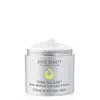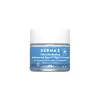What's inside
What's inside
 Key Ingredients
Key Ingredients

 Benefits
Benefits

 Concerns
Concerns

 Ingredients Side-by-side
Ingredients Side-by-side

Vitis Vinifera Juice
AntioxidantAloe Barbadensis Leaf Juice
Skin ConditioningPyrus Malus Juice
Skin ConditioningCitrus Limon Juice
Skin ConditioningCaprylic/Capric Triglyceride
MaskingHelianthus Annuus Seed Oil
EmollientGlyceryl Stearate
EmollientStearyl Alcohol
EmollientCetyl Alcohol
EmollientStearic Acid
CleansingGlycerin
HumectantGlyceryl Stearate Citrate
EmollientSimmondsia Chinensis Seed Oil
EmollientButyrospermum Parkii Butter
Skin ConditioningVitis Vinifera Seed Oil
EmollientSqualane
EmollientOenothera Biennis Oil
EmollientCeramide NP
Skin ConditioningTocopherol
AntioxidantCapryloyl Glycerin
Narcissus Tazetta Bulb Extract
AstringentCitrus Limon Leaf Cell Extract
Skin ConditioningMalus Domestica Fruit Cell Culture Extract
Skin ConditioningVitis Vinifera Fruit Cell Extract
Skin ConditioningPalmitoyl Tripeptide-5
Skin ConditioningPanthenol
Skin ConditioningAllantoin
Skin ConditioningAscorbic Acid
AntioxidantChamomilla Recutita Extract
Skin ConditioningSodium Hyaluronate
HumectantSodium PCA
HumectantBeta-Glucan
Skin ConditioningDiheptyl Succinate
EmollientEthylhexylglycerin
Skin ConditioningSodium Phytate
Carbomer
Emulsion StabilisingCaprylyl Glycol
EmollientGluconolactone
Skin ConditioningCinnamomum Camphora Wood Oil
MaskingLitsea Cubeba Fruit Oil
MaskingCitral
PerfumingEthyl Linalool
MaskingLimonene
PerfumingVitis Vinifera Juice, Aloe Barbadensis Leaf Juice, Pyrus Malus Juice, Citrus Limon Juice, Caprylic/Capric Triglyceride, Helianthus Annuus Seed Oil, Glyceryl Stearate, Stearyl Alcohol, Cetyl Alcohol, Stearic Acid, Glycerin, Glyceryl Stearate Citrate, Simmondsia Chinensis Seed Oil, Butyrospermum Parkii Butter, Vitis Vinifera Seed Oil, Squalane, Oenothera Biennis Oil, Ceramide NP, Tocopherol, Capryloyl Glycerin, Narcissus Tazetta Bulb Extract, Citrus Limon Leaf Cell Extract, Malus Domestica Fruit Cell Culture Extract, Vitis Vinifera Fruit Cell Extract, Palmitoyl Tripeptide-5, Panthenol, Allantoin, Ascorbic Acid, Chamomilla Recutita Extract, Sodium Hyaluronate, Sodium PCA, Beta-Glucan, Diheptyl Succinate, Ethylhexylglycerin, Sodium Phytate, Carbomer, Caprylyl Glycol, Gluconolactone, Cinnamomum Camphora Wood Oil, Litsea Cubeba Fruit Oil, Citral, Ethyl Linalool, Limonene
Water
Skin ConditioningAloe Barbadensis Leaf Juice
Skin ConditioningGlycerin
HumectantCaprylic/Capric Triglyceride
MaskingMacadamia Ternifolia Seed Oil
EmollientStearyl Alcohol
EmollientCetyl Alcohol
EmollientGlyceryl Stearate Citrate
EmollientStearic Acid
CleansingGlyceryl Stearate Se
EmulsifyingSodium Hyaluronate
HumectantSqualane
EmollientCeramide Ng
Skin ConditioningTocopheryl Acetate
AntioxidantCamellia Sinensis Leaf Extract
AntimicrobialAllantoin
Skin ConditioningPanthenol
Skin ConditioningDimethicone
EmollientAscorbyl Palmitate
AntioxidantSimmondsia Chinensis Seed Oil
EmollientXanthan Gum
EmulsifyingCapryloyl Glycerin/Sebacic Acid Copolymer
Skin ConditioningDiheptyl Succinate
EmollientPotassium Sorbate
PreservativePhenoxyethanol
PreservativeEthylhexylglycerin
Skin ConditioningParfum
MaskingWater, Aloe Barbadensis Leaf Juice, Glycerin, Caprylic/Capric Triglyceride, Macadamia Ternifolia Seed Oil, Stearyl Alcohol, Cetyl Alcohol, Glyceryl Stearate Citrate, Stearic Acid, Glyceryl Stearate Se, Sodium Hyaluronate, Squalane, Ceramide Ng, Tocopheryl Acetate, Camellia Sinensis Leaf Extract, Allantoin, Panthenol, Dimethicone, Ascorbyl Palmitate, Simmondsia Chinensis Seed Oil, Xanthan Gum, Capryloyl Glycerin/Sebacic Acid Copolymer, Diheptyl Succinate, Potassium Sorbate, Phenoxyethanol, Ethylhexylglycerin, Parfum
Ingredients Explained
These ingredients are found in both products.
Ingredients higher up in an ingredient list are typically present in a larger amount.
Allantoin is a soothing ingredient known for its protective and moisturizingg properties. Because of this, it is often added to products with strong active ingredients.
Studies show higher concentrations of this ingredient can promote wound healing.
Though it can be derived from the comfrey plant, allantoin is produced synthetically for cosmetic products to ensure purity.
Learn more about AllantoinAloe Barbadensis Leaf Juice comes from leaves of the aloe plant. Aloe Barbadensis Leaf Juice is best known for helping to soothe sunburns. It is also anti-inflammatory, moisturizing, antiseptic, and can help heal wounds.
Aloe is packed with good stuff including Vitamins A, C, and E. These vitamins are antioxidants, which help fight free-radicals and the damage they may cause. Free-radicals are molecules that may damage your skin cells, such as pollution.
Aloe Barbadensis Leaf Juice also contains sugars. These sugars come in the form of monosaccharides and polysaccharides, folic acid, and choline. These sugars are able to help bind moisture to skin.
It also contains minerals such as calcium, 12 anthraquinones, fatty acids, amino acids, and Vitamin B12.
Learn more about Aloe Barbadensis Leaf JuiceThis ingredient is an emollient, solvent, and texture enhancer. It is considered a skin-softener by helping the skin prevent moisture loss.
It helps thicken a product's formula and makes it easier to spread by dissolving clumping compounds.
Caprylic Triglyceride is made by combining glycerin with coconut oil, forming a clear liquid.
While there is an assumption Caprylic Triglyceride can clog pores due to it being derived from coconut oil, there is no research supporting this.
Learn more about Caprylic/Capric TriglycerideCetyl Alcohol is a fatty alcohol. Fatty Alcohols are most often used as an emollient or to thicken a product.
Its main roles are:
Though it has "alcohol" in the name, it is not related to denatured alcohol or ethyl alcohol.
The FDA allows products labeled "alcohol-free" to have fatty alcohols.
Learn more about Cetyl AlcoholWe don't have a description for Diheptyl Succinate yet.
Ethylhexylglycerin (we can't pronounce this either) is commonly used as a preservative and skin softener. It is derived from glyceryl.
You might see Ethylhexylglycerin often paired with other preservatives such as phenoxyethanol. Ethylhexylglycerin has been found to increase the effectiveness of these other preservatives.
Glycerin is already naturally found in your skin. It helps moisturize and protect your skin.
A study from 2016 found glycerin to be more effective as a humectant than AHAs and hyaluronic acid.
As a humectant, it helps the skin stay hydrated by pulling moisture to your skin. The low molecular weight of glycerin allows it to pull moisture into the deeper layers of your skin.
Hydrated skin improves your skin barrier; Your skin barrier helps protect against irritants and bacteria.
Glycerin has also been found to have antimicrobial and antiviral properties. Due to these properties, glycerin is often used in wound and burn treatments.
In cosmetics, glycerin is usually derived from plants such as soybean or palm. However, it can also be sourced from animals, such as tallow or animal fat.
This ingredient is organic, colorless, odorless, and non-toxic.
Glycerin is the name for this ingredient in American English. British English uses Glycerol/Glycerine.
Learn more about GlycerinGlyceryl Stearate Citrate is a citric acid ester of glyceryl stearate.
It is an emulsifier, emollient, and a surfactant.
Emulsifiers help stabilize a product. It does this by preventing certain ingredients from separating. Common ingredients include oils and water, which do not mix naturally. Emulsifiers have properties that help keep ingredients such as these together.
Emollients help soothe and soften the skin. They do this by creating a protective film on your skin. This barrier helps trap moisture and keeps your skin hydrated. Emollients may be effective at treating dry or itchy skin.
Surfactants help gather oils, dirt, and other pollutants from the skin. This helps them to be easily rinsed away.
Learn more about Glyceryl Stearate CitratePanthenol is a common ingredient that helps hydrate and soothe the skin. It is found naturally in our skin and hair.
There are two forms of panthenol: D and L.
D-panthenol is also known as dexpanthenol. Most cosmetics use dexpanthenol or a mixture of D and L-panthenol.
Panthenol is famous due to its ability to go deeper into the skin's layers. Using this ingredient has numerous pros (and no cons):
Like hyaluronic acid, panthenol is a humectant. Humectants are able to bind and hold large amounts of water to keep skin hydrated.
This ingredient works well for wound healing. It works by increasing tissue in the wound and helps close open wounds.
Once oxidized, panthenol converts to pantothenic acid. Panthothenic acid is found in all living cells.
This ingredient is also referred to as pro-vitamin B5.
Learn more about PanthenolThis oil comes from the seeds of the desert shrub called Jojoba. It is more commonly known as jojoba oil, a non-comedogenic oil.
Jojoba oil does not contain fragrance and has many fatty-acids, making it a great soothing ingredient.
It also contains Vitamin E, a great moisturizing ingredient. Vitamin E is also an antioxidant and protects your skin against oxidative damage.
This ingredient humectant properties, meaning it helps draw moisture from the air. This helps keep your skin hydrated.
While jojoba has antibacterial properties, it is only able to kill some strains of bacteria.
Studies also show it helps in wound healing. In fact, Indigenous cultures have used jojoba as a moisturizer and to help treat burns for centuries.
Fun fact: Jojoba oil similar to natural human skin sebum, so it has a great effect on dry skin. It is also promising with helping to regulate sebum production.
Due to its fatty acid content, Jojoba oil may not be fungal acne safe. We recommend speaking with a professional if you have any concerns.
Learn more about Simmondsia Chinensis Seed OilSodium Hyaluronate is hyaluronic acid's salt form. It is commonly derived from the sodium salt of hyaluronic acid.
Like hyaluronic acid, it is great at holding water and acts as a humectant. This makes it a great skin hydrating ingredient.
Sodium Hyaluronate is naturally occurring in our bodies and is mostly found in eye fluid and joints.
These are some other common types of Hyaluronic Acid:
Learn more about Sodium HyaluronateSqualane is an emollient that helps the skin hold onto moisture. It's an oily liquid that occurs naturally in certain types of fish and plant oils.
Because squalane boosts hydration in the skin, it also comes with plenty of benefits: it is an antioxidant and can help fight free radicals and skin damage. Squalane is also found to have a detoxifying effect when applied.
Squalane comes from squalene, which occurs naturally within the sebum of our skin. It is one of the oils our skin produces to keep itself hydrated. Squalane is the hydrogenated version of squalene and has a longer shelf life.
Research shows that squalane is non-irritating (even at 100% concentration).
In general, it's a fantastic ingredient. It does a great job at hydrating the skin, and it's suitable for those with sensitive skin.
The source of squalane may impact malassezia / fungal acne. This is because olive oil derived squalane can contain impurities such as fatty acids and plant waxes. Sugarcane derived squalane is recommended for anyone with malassezia concerns.
Is squalane vegan?
This depends on the source. Squalane can be derived from both plants and animals. Most squalane used in skincare comes from plants.
Please note: the source of squalane is only known if disclosed by the brand. We recommend reaching out to the brand if you have any questions about their squalane.
Read more about squalene with an "e".
Is squalane an oil?
Squalane is often called an oil, but it’s technically not; it’s a hydrocarbon, meaning it’s only made of carbon and hydrogen, unlike true oils which are triglycerides made of fatty acids and glycerol.
The term “oil-free” isn’t regulated, so companies can define it however they want. Some exclude all oils, while others just avoid mineral oil or comedogenic oils.
While some people avoid oils thinking they cause breakouts, the right kind of oil (or oil-like ingredient like squalane) can actually help balance and hydrate your skin. It’s worth testing out simple oils or squalane to see what works best for your skin.
Learn more about SqualaneStearic Acid is a fatty acid. It is an emollient, emulsifier, and texture enhancer.
As an emollient, stearic acid helps soften skin. It aids the skin's protective barrier by preventing water loss. It also provides a gentle cleansing effect without stripping away natural oils.
Stearic acid may also be used to enhance the texture of products. It can add volume and stabilize ingredients such as water and oil. This can help water and oil ingredients from separating.
Sources of stearic acid include animal or vegetable fats/oils such as coconut or shea. It can be naturally found in butter, cocoa butter, shea butter, vegetable fats, and animal tallow.
This ingredient may not be Malassezia folliculitis, or fungal-acne safe.
Learn more about Stearic AcidStearyl Alcohol is a type of fatty alcohol from stearic acid. It is a white, waxy compound used to emulsify ingredients.
Fatty Alcohols are most often used as an emollient or to thicken a product. Emollients help soothe and hydrate the skin by trapping moisture.
They are usually derived from natural fats and oils and therefore do not have the same drying or irritating effect as solvent alcohols. FDA allows products labeled "alcohol-free" to have fatty alcohols.
Learn more about Stearyl Alcohol